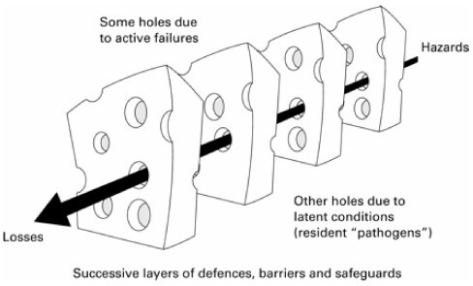By Nicholas Worrell, Chief, Safety Advocacy Division
 May is Motorcycle Safety Awareness month and, for those of us who don’t have the privilege of riding year-round, the season is upon us. You may have heard that new data from the state highway safety offices show that motorcyclist fatalities were down 5.6% in 2017—a difference of 296 lives—which the Governors Highway Safety Association estimates means about 4,990 people were killed on motorcycles last year.
May is Motorcycle Safety Awareness month and, for those of us who don’t have the privilege of riding year-round, the season is upon us. You may have heard that new data from the state highway safety offices show that motorcyclist fatalities were down 5.6% in 2017—a difference of 296 lives—which the Governors Highway Safety Association estimates means about 4,990 people were killed on motorcycles last year.
All of us in roadway safety have a common mission and goal: To reduce crashes, injuries, and fatalities on the roads. Motorcycles are disproportionately represented in fatality statistics, and the NTSB has long been concerned with motorcycle safety.
In 2007, we issued Safety Recommendation H-07-39, calling on states and territories to require that all riders wear an FMVSS 218-compliant helmet while on a motorcycle. Although wearing a helmet is a rider’s best protection in the event of a crash, currently only 16 states have motorcycle helmet laws. Several others that once had helmet laws have repealed them.
Repealing a helmet law is like taking the seat belts back out of cars and selling them at roadside stands to those drivers who want one. It’s making the road user’s best protection optional. Riders are 29 times more likely than car occupants to die in a crash; they should be required to use the best possible protection.
There are many other instances where we’ve emphasized the importance of motorcycle safety.
- In 2007, we held a forum to address the issue.
- In 2010 and 2012, we added Improve Motorcycle Safety to our Most Wanted List of transportation safety improvements.
- We’ve featured blog posts on motorcycle safety.
We continue to advocate for motorcycle safety by testifying before state legislators, educating the public, and working with advocacy groups to raise awareness about the issue. And we’ll continue to do so until we reach zero rider fatalities.
I’ve heard people say that a helmet law or a seat belt law takes away their freedom. But I’ve also heard people say a helmet or a seat belt saved their life. So, if you’re a cager, please buckle up, every seat, every trip; or, if you’re a rider, put on that FMVSS-218–compliant helmet, because I’ve seen what people look like after a crash when they haven’t made that choice and I don’t want that to happen to you.
I’ve also heard people say a helmet or a seat belt saved their life. So, if you’re a cager, please buckle up, every seat, every trip; or, if you’re a rider, put on that FMVSS-218–compliant helmet, because I’ve seen what people look like after a crash when they haven’t made that choice and I don’t want that to happen to you.
Personally, I like having a reminder written into the law (and backed up by a hefty penalty), because when the sun is shining, and the weather is fine, sometimes I want to feel as free as possible. But the laws of physics are the same on all days, and they can’t be repealed. I’m thankful for helmet laws, just like seat belt laws; I’m glad they’re there, helping shape my habits. Helmet laws reinforce lifesaving habits that all riders benefit from.
During this Motorcycle Safety Awareness month and Memorial Day weekend, many messages deserve to be spread—Ride your own ride. Don’t ride impaired or fatigued. Share the road. But, when all else fails, the one message you don’t want to miss is “wear a helmet,” whether the law in your state requires it or not.












